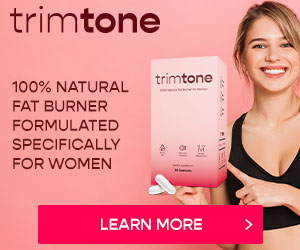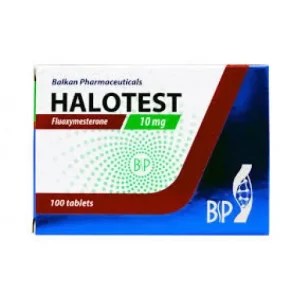Steroids
Powerlifting Vs Power Building: Find Out the Big Difference and When to Shift Between the Two

Powerlifting and power building are two distinct forms of weightlifting with different goals and techniques. While powerlifting is focused on maximizing strength, power building is more about increasing muscle size and aesthetics.
In this article, we will explore the differences between these two forms of weightlifting and discuss when it’s best to switch from one to the other. We will also look at some tips for making the transition easier and more successful.
What is Powerlifting?
Powerlifting is a strength sport that consists of three main lifts: the squat, bench press, and deadlift. Powerlifters often use lower-weight loads and perform multiple reps to increase their strength.
For example, some powerlifters might squat 225 lbs for 10 repetitions using a sumo stance (the wide-legged stance most people know when performing the squat). The number of repetitions performed in each lift can vary from 1-5 depending on the lifter’s goals or experience level. When powerlifters compete against one another, their squat and bench press maxes are often considered. Powerlifters typically wear supportive, high-quality gear and lifting shoes with a flat springy sole.
The gear helps to prevent injuries when lifting heavy loads and provides needed support for the body. Powerlifters often have a platform (a triangular wooden frame) welded to the back of the squat rack, which they use during squats to help balance themselves during heavy sets. Bench pressing can be performed in the squat rack or on a bench.
Why Squat Racks?
Squat racks are easier and safer because you can use them without worrying about getting the bar in your eyes or having it come forward and hit you in the head. Trap bar training ("dual-opposition training") is often done with a trap bar attached to pegs on both sides of a squat rack to grant more stability than any one-handed implement. It also permits more freedom of movement than an Olympic lifting apparatus since there are no cross handles for precise bar positioning.
Proper Powerlifting Strategies
In use, it is placed in front of the lifter at a distance from each end, and the lifter grasps it with an overhand grip. The lifter's hands are placed just outside shoulder width, elbows slightly bent, and feet shoulder-width apart. The bar is lifted by pushing underneath its middle (the area right under the hands) with the feet while keeping both feet flat on the ground, effectively raising it without moving them laterally one iota. The bar should be pulled upwards until a slight tension can be felt in both triceps and biceps. A common variant of this movement is the shoulder press, which uses more weight and involves a greater range of motion.
The barbell shoulder press is performed by grasping a barbell with hands just outside shoulder width and then thrusting the body backward, raising the weight off the ground until the arms are straight. The movement is stopped when a slight tension can be felt in both triceps and biceps.
Power Building for bodybuilders is an essential component of any successful bodybuilding routine. It combines strength training, endurance training, and nutrition to maximize muscle growth and strength gains. Power Building for bodybuilders focuses on developing the core lifts such as squats, bench presses, deadlifts, and overhead presses.
It also includes exercises that target specific muscle groups such as biceps and triceps. Proper nutrition is also an important factor in power building for bodybuilders as it helps to fuel the muscles with the necessary nutrients for optimal performance. With a well-rounded program that combines all these elements, bodybuilders can achieve their goals of gaining strength and size while maintaining a healthy lifestyle.
The Power Building program is used by strength and conditioning coaches to develop muscle mass, strength, explosiveness, and body composition in athletes. This program can also be used for weightlifters seeking increased performance in the weight room. The program is split into three phases. The first phase lasts 8 weeks, the second lasts 16 weeks, and the third lasts 20 weeks. This program aims to help increase muscle mass, improve strength, and reduce body fat.
Must Read: Post Cycle Therapy Vs. B&C: Which is Best for You?
Phase One
This phase lasts 8 weeks. Each workout routine is divided into three movements: push, pull, and squats. You will always do two sets for each exercise, except push presses which are done as a single set. The first week will begin with two exercises for each muscle group and decrease to one exercise per muscle group by week four.
Then you will be back up to two exercises again by week eight before continuing from there with 1 movement per day until the end of Phase 3.Phase 1: Starting StrengthWeek 1-2Push Presses: 3 sets of 8 Push Ups Pull-Ups: 3 sets of 12 chin ups/dips Squats: 3 sets of 15, 10 reps Deadlifts: 3 sets of 10 reps Standing Military Presses (3-sec hold at top): 6 sets of 6 reps each week.
Week 3-4Push Presses: 4 sets of 8 Push Ups Pull-Ups: 4 sets of 12 chin ups/dips Squats: 4 sets of 15, 10 reps Deadlifts: 4 sets of 10 reps Standing Military Presses (3-sec hold at top): 8 sets of 6 reps each week
Phase 2
Starting Strength , then adding weight each weekWeek 5-6Push Presses: 5 sets of 8 Push Ups Pull-Ups: 5 sets of 12 chin ups/dips Squats: 5 sets of 15, 10 reps Deadlifts: 5 sets of 10 reps Standing Military Presses (3 sec hold at top): 10 sets of 6 reps each weekWeek 7-8Push Presses: 6 sets of 8 Push Ups Pull-Ups: 6 sets of 12 chin ups/dips Squats: 6 sets of 15, 10 reps Deadlifts: 6 sets of 10 reps Standing Military Presses (3 sec hold at top): 12 sets of 6 reps each weekWeek 9-10Push Presses: 7 sets of 8 Push Ups Pull-Ups: 7 sets of 12 chin ups/dips Squats: 7 sets of 15, 10 reps Deadlifts: 7 sets of 10 reps Standing Military Presses (3 sec hold at top): 14 sets of 6 reps each week.
Strength in Powerlifting
Bodybuilding is a sport that requires a lot of strength and power. Powerlifting is an important part of bodybuilding, as it helps to build muscle and increase strength. But how are bodybuilders able to power lift frequently? The answer lies in their training techniques and their dedication to the sport.
Bodybuilders use a variety of exercises and techniques to be able to power lift frequently. They focus on building strength by doing compound exercises such as squats, deadlifts, bench presses, and overhead presses. They also ensure they get enough rest between workouts so their muscles can recover properly.
Additionally, they eat a diet high in protein and other nutrients that help build muscle mass quickly. All these factors combined help them be able to power frequently lift without feeling tired or overworked.
Why Powerlifting Alone Cannot Build A Strong Body
Bodybuilders have high levels of testosterone, which is a muscle-building hormone. They also make sure they get enough rest. Bodybuilding is an effective way of building muscle mass quickly because it puts people in an anabolic state, where their body is not breaking down or being used up for energy. This means that regardless of the time spent on training, the bodybuilder will still grow and maintain muscle mass. Many studies show this to be true, and athletes using those techniques can achieve their goals faster than those who don't regularly use them.
Powerlifting is essential to bodybuilding and can help you reach your goals faster. It is a great way to build strength and muscle mass while improving your fitness.
Powerlifting tips can help you maximize your gains and reach your desired physique if you are a bodybuilder. Here are some powerlifting tips to help you get the most out of your workouts and stay safe while lifting weights.
If you haven't done powerlifting before, prepare by doing some simple strength training exercises. Try kettlebell swings, pushups, or pull-ups. Also, don't forget to stretch before and after your workouts. Focus on a limited number of exercises per body part and work those different muscles in each workout. For example, do bench presses Wednesdays and deadlifts Fridays to target the chest and back, respectively, at the same time each week.
Alternating Between Different Muscles
On Saturday, alternate between one-arm barbell rows for the back muscles with squats for quadriceps muscles such as legs. Work out for about 30 minutes before taking a break for about 10-15 minutes. If you must take longer than 15 minutes, do it in two 5-minute sessions. Aim to do your exercise within 4-6 reps per set. This allows you to use heavier weights and build muscle over time without burning out quickly. Do not work the same body part two days in a row (unless it's a rest day). For example, you should not work your chest on Wednesday and again on Friday, as this will cause muscular imbalance and overcompensation.
Perform one set for each muscle group, working each muscle once or twice per week. You should take a day off every week to allow muscles to recover and build strength.
For those looking to get into the fitness world, there is often a debate between building muscle and powerlifting. While both have advantages, deciding which is right for you can be difficult. That's why it's important to understand the differences and how they can be used together to achieve your fitness goals. By understanding the differences between building muscle and powerlifting, you can find a balance that works for you and helps you reach your goals faster.
The Science Behind Building Muscle
Building muscle is a process where your body slowly builds up the size of individual muscle fibers. This process can take anywhere from 8-12 weeks, but most people see their results after 6-8 weeks. Building muscle is to increase your overall strength and build a toned physique rather than adding pounds of weight to your muscles.
Muscles are built by creating microscopic tears in the muscle fiber, which are then repaired by satellite cells. For this growth to happen, you need a lot of protein and carbohydrates to feed your muscles while they recover from workouts. I'm doing this for many reasons.
Powerlifting is a strength-based sport that requires skill, technique, and dedication. It is a great way for professional bodybuilders to stay in shape and increase their muscle mass. Powerlifting can help pro bodybuilders reach their goals faster by increasing their strength and endurance. It also helps them build muscle mass quicker than traditional weight-lifting exercises.
Powerlifting For Pro Bodybuilders
Powerlifting by pro bodybuilders can be an effective way to achieve the desired fitness level, as it allows them to lift heavier weights than they would normally do with traditional weight-lifting exercises. Additionally, powerlifting helps pro bodybuilders develop more explosive power, which can help them in competitions. Furthermore, powerlifting can also help improve coordination and balance, which are important skills for any athlete.
Weightlifting is a sport; to achieve the best performance possible, it requires specific training and diet. Bodybuilders often choose weightlifting to improve their lower body strength which helps them lift more weight than they would be able to with bodybuilding exercises. Additionally, weightlifting helps pro bodybuilders develop more endurance and power while using less energy.
Powerlifters compete against each other in timed events where the object is to either complete a certain amount of repetitions with a specific amount of weight or move the barbell from point A to point B with maximum intensity. While this type of training is similar to that of bodybuilding, those who compete in powerlifting don't have to build up their muscles through progressive resistance training. as they are not concerned with aesthetics.
By contrast, powerlifters compete in events from a squat to a bench press, where the object is to lift as much weight as possible and most efficiently. They might have a maximum weight of 25kg for the squat and 165kg for the bench press. They will finish those events by completing one repetition or moving their bodies from point A to point B with maximum intensity, respectively.
Related Article: Olympic Lifting: 25 Strategies That Work
The Big Difference
Powerlifters train similarly to bodybuilders by increasing their muscle mass through progressive resistance training over time by lifting heavier weights to hit intense lifts like squats and benches regularly. Athletes often have a challenge to complete within a certain time limit, such as deadlifting 250 pounds within 30 seconds or completing 20 pull-ups in 2 minutes. In these cases, the athlete would compete by completing one repetition of the event or moving their body from point A to point B with maximum intensity respectively.
Reverse Pyramid Training is most commonly used in powerlifting and Strongman competitions. Athletes will repeat the same weight for four sets of five repetitions at 80% of their 1rm with short rest periods between each set, also known as a "reverse pyramid."Powerlifters will complete a bench press workout consisting of three sets with 8-12 repetitions at 70% of their 1rm with short rest periods between each set; this is also known as a "reverse pyramid" bench press. What are the benefits of reverse pyramid training?
Benefits for Athletes
The athlete will experience a greater training effect due to their system’s ability to recover from each successive set; as they progress in strength, they can perform each set with more weight and volume, rather than starting at 100% of their 1rm and working down.- As the load increases throughout the workout, so does intensity. Athletes typically do not feel as much fatigue towards the end of a workout as if they did not take rest periods between sets. Reverse pyramid workouts that target hypertrophy typically last around 45 minutes and have anywhere from 10 to 20 sets. Rest periods between sets typically last about 30 seconds, but athletes should take rests as long as needed.
Building more muscle through powerlifting and dieting can be a daunting task. But with the right knowledge and dedication, anyone can do it. Powerlifting is an effective way to build strength, while proper nutrition is essential for muscle growth. This article will discuss the best practices for powerlifting and dieting to help you build muscle mass quickly and effectively. We will also discuss combining these two disciplines to maximize your gains.
Powerlifting
Powerlifting is a strength sport where you perform repetitive and standardized holds at maximal weights. Throughout the competition, the athlete or lifter will try to accumulate as much weight as possible on their back while completing the most repetitions. There are currently three total powerlifting disciplines: Olympic lifting, strongman lifting, and powerlifting.
Each of these three disciplines consists of six lifts: The squat, deadlift, bench press, shoulder press (deltoid), military press (latissimus dorsi), and pull-up. An individual could compete in one or all three disciplines. Olympic lifting is a sport where athletes attempt to lift as much weight as possible using different techniques.
Olympic Events to Powerlift
There are two Olympic lifting events: the snatch and the clean and jerk. The snatch is performed when an athlete, starting from a dead stop, continuously lifts a barbell from the floor to overhead by contracting both arms above their head. The clean and jerk are performed when an athlete cleans a barbell (grabs it with one hand), then jerks it overhead with both arms at once by contracting their legs behind them.
Strongman competition involves strongmen performing feats of strength in various implements, including stone lifting, tire flipping, keg holding, and sandbag carrying. There are two Olympic lifting events: the snatch and the clean and jerk. The snatch is performed when an athlete, starting from a dead stop, continuously lifts a barbell from the floor to overhead by contracting both arms above their head.
The clean and jerk are performed when an athlete cleans a barbell (grabs it with one hand), then jerks it overhead with both arms at once by contracting their legs behind them. Strongman competition involves strongmen performing feats of strength, usually related to using various types of barbells.
Overall
Strongman competitions have no weight limit; strongmen often compete in feats requiring extremely heavy weights. Power clean The power clean is a variation of the clean and jerk, where athletes explosively push themselves upwards from a squatting position by extending their knees and hips while simultaneously bringing the bar into their hips with an overhand grip.
Steroids
Creatine vs Myostatin: An Expert’s Analysis
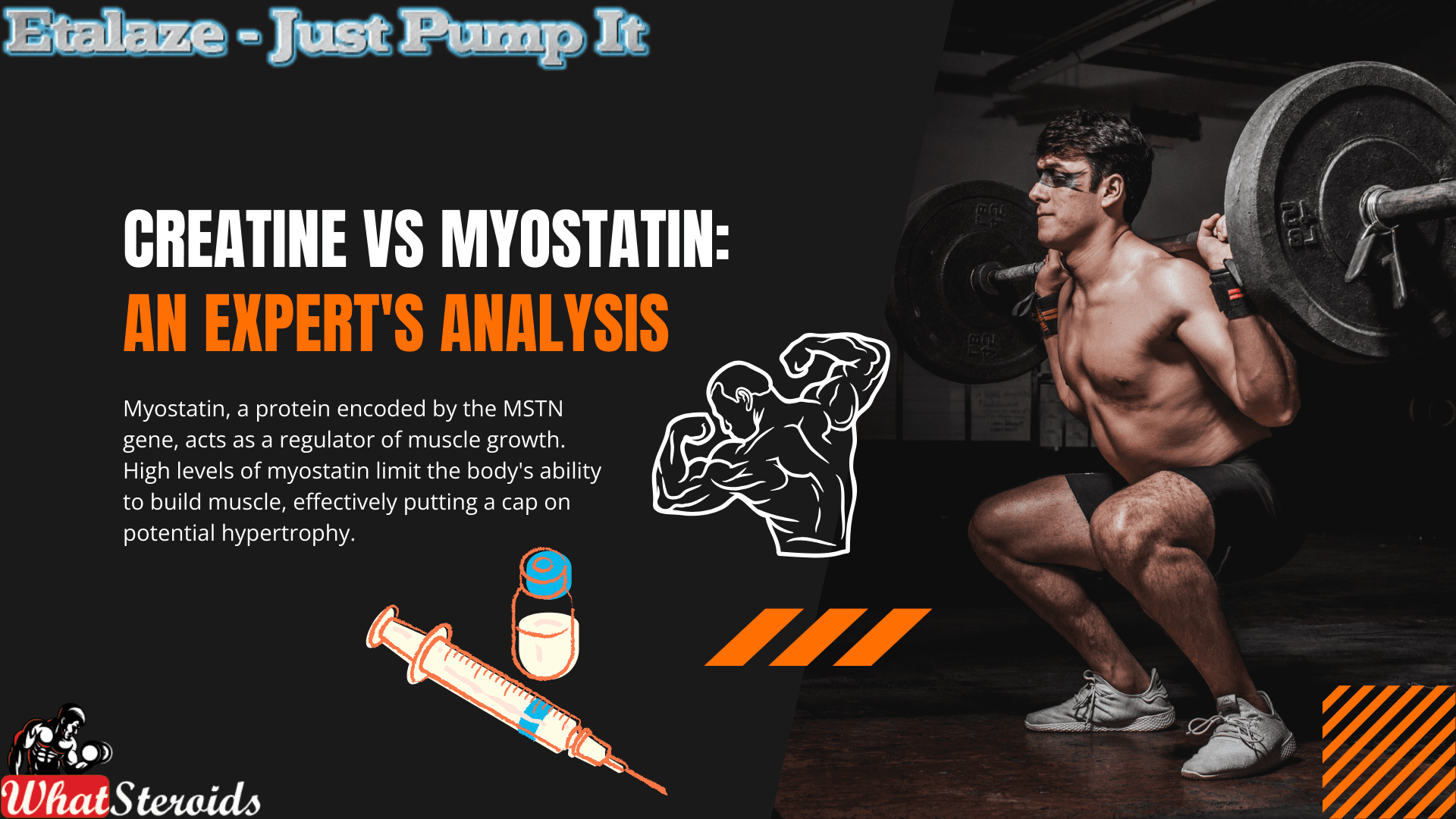
Myostatin, a protein encoded by the MSTN gene, acts as a regulator of muscle growth. High levels of myostatin limit the body's ability to build muscle, effectively putting a cap on potential hypertrophy. Inhibiting myostatin has become a focal point for bodybuilders looking to break through plateaus and achieve significant muscle gains. The question is: can creatine, a popular and widely available supplement, help in this regard?
Medical History of Myostatin and Creatine
Myostatin and creatine, while popular now in the bodybuilding world, have their roots in entirely different contexts:
Myostatin: Natural Muscle Growth Regulator
Myostatin is a protein originally identified for its role in regulating skeletal muscle mass. In nature, it serves an evolutionary purpose: by limiting muscle growth, it conserves energy, ensuring that animals (and humans) don’t expend unnecessary resources maintaining excessive muscle tissue. This was especially important in the wild, where energy efficiency could mean the difference between survival and extinction.
 Check Adipotide (FTPP) 10mg by Peptide Science
Check Adipotide (FTPP) 10mg by Peptide Science
In the medical field, research into myostatin has focused on its role in muscle-wasting diseases. Scientists are exploring ways to inhibit myostatin to treat conditions like muscular dystrophy, where excessive muscle loss impairs quality of life. This therapeutic potential is where the idea of myostatin inhibition first began—long before bodybuilders latched onto the concept.
Creatine: Energy and Medical Applications
Creatine was originally studied for its role in energy metabolism. It’s a naturally occurring compound stored in muscle cells and plays a critical part in replenishing ATP (adenosine triphosphate), the body’s primary energy currency during short, high-intensity activities.
Before becoming a bodybuilding staple, creatine gained recognition in medical and sports science for its ability to improve athletic performance and assist with recovery. Furthermore, in medicine, creatine was investigated for neurological conditions such as Parkinson’s disease, Huntington’s disease, and muscular dystrophy, given its potential to improve muscle function and brain energy metabolism.
In the sports world, it was initially adopted by sprinters and weightlifters in the 1970s and 1980s for its energy-enhancing benefits.
Both myostatin and creatine have found new life in bodybuilding circles, demonstrating how discoveries in natural physiology and medical science can lead to transformative applications in fitness.
Benefits of Creatine as a Myostatin Inhibitor
Muscle Growth Potential: Research suggests that creatine, when paired with intense resistance training, may inhibit myostatin to a degree, fostering an environment for enhanced muscle growth.
Improved Exercise Performance: Creatine is well-known for its ability to increase ATP production, translating to better performance during high-intensity activities.
Versatility Across Fitness Levels
Whether you're a beginner or an advanced athlete, creatine offers benefits that complement various stages of muscle-building.
Must Read: A New Caffeine? What You Need to Know about Teacrine
Affordability and Accessibility
Compared to specialized myostatin inhibitors like YK-11 and ACE-031, creatine is significantly more affordable and accessible.
Side Effects of Creatine
While generally safe for most individuals, creatine supplementation does come with some potential side effects:
Water Retention: Some users experience bloating due to increased water retention in muscle cells.
Gastrointestinal Issues: High doses may lead to stomach upset or diarrhea.
Kidney Concerns: Although rare, prolonged excessive use could strain the kidneys, particularly in individuals with pre-existing conditions.
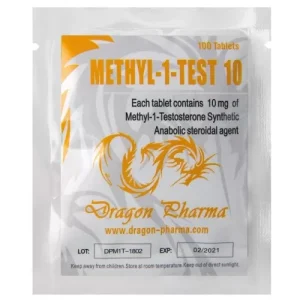 Buy Methyl-1-Test 10 -100 tabs by Dragon Pharma
Buy Methyl-1-Test 10 -100 tabs by Dragon Pharma
Alternatives to Creatine for Myostatin Inhibition
YK-11: A synthetic myostatin inhibitor derived from SARMs, offering more potent results but accompanied by more significant risks.
ACE-031: A peptide that directly inhibits myostatin, though it remains in experimental phases and is not legally approved in many regions.
Natural Alternatives
Follistatin-rich Foods: Eggs and dairy products may have natural myostatin-inhibiting properties.
Resistance Training: Intense and consistent weightlifting alone can naturally lower myostatin levels.
Where to Buy Creatine
Creatine is readily available worldwide. It can be purchased from:
Local Pharmacies and Nutrition Stores: Ideal for trusted and immediate access.
Online Platforms: Websites like Amazon, iHerb, or bodybuilding-specific stores offer a variety of brands and formulations.
Supplement Brands: Well-established brands such as Optimum Nutrition, MyProtein, and Cellucor often carry high-quality creatine.
Legality of Myostatin Inhibitors
Creatine: Creatine is completely legal and widely accepted as a dietary supplement.
YK-11 and ACE-031: These compounds exist in a legal gray area in many countries due to their experimental nature and potential risks. It's essential to research local laws before considering these options.
Best Stores and Suppliers
For reputable products, consider:
Transparent Labs: Known for purity and transparent labeling.
Optimum Nutrition: Offers pharmaceutical-grade creatine monohydrate.
Bulk Supplements: A great choice for bulk buyers seeking affordability and quality.
Our Advice to Bodybuilders
Always consult with a healthcare professional before starting any new supplement, especially if you are already using AAS or other advanced compounds.
Prioritize a balanced diet and consistent exercise routine. Supplements like creatine work best as part of a holistic approach to fitness.
Stay hydrated while using creatine to minimize water retention side effects and support kidney health.
Related Article: Best Syringes for Steroid Injection on Amazon
Overall
While creatine may not be as potent a myostatin inhibitor as advanced compounds like YK-11 or ACE-031, its affordability, safety, and accessibility make it a valuable addition to any bodybuilder's supplement stack. By leveraging its benefits alongside proper training and nutrition, you can maximize muscle growth and overcome plateaus, regardless of your fitness level.
Steroids
Raloxifene (Evista) 101: A Non-Surgical Solution for Gyno

Raloxifene, a selective estrogen receptor modulator (SERM), is one of the most valuable yet less common options available today. Originally developed to prevent and treat breast cancer similar to Tamoxifen, it has gained popularity among bodybuilders seeking to prevent or eliminate gyno.
 Click Here to Buy Evimed 60 by Deus Medicals
Click Here to Buy Evimed 60 by Deus Medicals
Unlike Tamoxifen, Raloxifene is potent enough to reduce long-standing gynecomastia and is frequently used to reverse pubertal gynecomastia. While it can also boost testosterone levels, it is one of the weaker SERMs in this regard.
How it Works
Raloxifene functions by blocking estrogen receptors in the breasts, which helps prevent or treat both gynecomastia and breast cancer. Additionally, it blocks estrogen receptors in the hypothalamus, stimulating testosterone production.
Beyond these primary benefits, Raloxifene can enhance bone mass, combat osteoporosis, and lower cholesterol levels.
Potential Side Effects
While Raloxifene is considered a generally safe and effective medication, like all drugs, it comes with its own set of potential side effects. One of the most notable is the reduction in Insulin-like Growth Factor 1 (IGF-1) levels. IGF-1 plays a key role in muscle growth and repair, so decreased levels could potentially impact athletic performance or recovery.
However, compared to other medications in its class, Raloxifene has a relatively low risk of causing severe liver toxicity. Users are less likely to experience harmful effects such as blood clots, mood swings, or sexual dysfunction, making it a preferable choice for many.
While rare, some users might experience less serious side effects such as hot flashes, leg cramps, or flu-like symptoms. It's essential to consult with a healthcare professional to monitor any adverse reactions and ensure the medication is being used safely.
So, despite its efficacy, Raloxifene is not without side effects, but they are typically manageable and less severe compared to other SERMs.
Check Out Halotest 10 mg, Balkan Pharmaceuticals
For gyno reversal, the typical protocol involves taking 60mg daily for 1-2 weeks, followed by 30mg daily for up to 3 months or until the condition resolves.
Read More: Joint Stiffness on AAS, How to Manage It
Typical Protocol
For gynecomastia reversal, the typical protocol involves taking 60mg of Raloxifene per day for 1-2 weeks, followed by a reduced dose of 30mg per day for up to 3 months or until the gynecomastia is resolved. In post-cycle therapy (PCT), bodybuilders generally take 60mg per day for 4-6 weeks, and then lower the dose to 30mg per day during the last week. Raloxifene is highly effective for managing gynecomastia and supporting post-cycle recovery, making it a valuable addition to a well-optimized bodybuilding regimen.
Overall
Raloxifene (Evista) is a versatile SERM used to treat breast cancer and is popular among bodybuilders for managing gynecomastia (gyno). Unlike Tamoxifen, it effectively shrinks long-standing gyno and reverses pubertal gyno. It blocks estrogen receptors in the breast and hypothalamus, thus preventing gyno and promoting Testosterone secretion. Additionally, it improves bone mass, combats osteoporosis, and lowers cholesterol levels. For gyno, take 60mg/day for 1-2 weeks, then 30mg/day for up to 3 months. For post-cycle therapy (PCT), take 60mg/day for 4-6 weeks, then reduce to 30mg/day during the final week. This safe and effective medication has minimal side effects.
Bodybuilding
Mastering Bodybuilding in 2025: Top Fitness Tips for Success

Bodybuilding is more than just a sport; it's a lifestyle that requires dedication, discipline, and a thorough understanding of fitness principles. As the world of fitness continues to evolve, bodybuilders must stay updated with the latest trends, techniques, and scientific advancements to achieve their goals. In 2025, several innovative approaches are redefining bodybuilding. Here are essential fitness tips for bodybuilders to excel this year.
Read More: Bodybuilder Winter Clothing: Staying Warm and Stylish
Embrace Technology-Driven Workouts
In 2025, technology plays a significant role in bodybuilding. Wearable devices, fitness apps, and virtual reality (VR) training are now integral components of an effective workout regimen.
Wearable Devices
Modern wearables track everything from heart rate and sleep patterns to muscle activation and caloric expenditure. Utilize these devices to monitor your progress and make data-driven adjustments to your training and nutrition plans.
Fitness Apps
Leverage fitness apps for customized workout plans, progress tracking, and virtual coaching. Many apps now incorporate artificial intelligence to provide personalized feedback and recommendations.
Virtual Reality Training
VR technology offers immersive workout experiences, allowing bodybuilders to simulate different training environments and scenarios. This can enhance motivation and add variety to your routine.
Focus on Functional Strength
While hypertrophy (muscle growth) remains a primary goal, functional strength is gaining importance. Functional strength training improves overall performance, reduces the risk of injury, and enhances daily activities.
 Check Out Our1 4 Weeks Quality Strength & Lean Muscles
Check Out Our1 4 Weeks Quality Strength & Lean Muscles
Compound Movements
Incorporate compound exercises like squats, deadlifts, and bench presses. These movements engage multiple muscle groups and joints, promoting balanced strength development.
Core Stability
Prioritize exercises that strengthen the core, such as planks, Russian twists, and leg raises. A strong core supports better lifting mechanics and reduces the risk of lower back injuries.
Optimize Nutrition for Muscle Growth and Recovery
Nutrition is the cornerstone of successful bodybuilding. In 2025, the focus is on personalized nutrition plans tailored to individual needs and goals.
Protein Intake
Ensure adequate protein intake to support muscle repair and growth. Aim for 1.6 to 2.2 grams of protein per kilogram of body weight per day, depending on your training intensity and goals.
 Click Here to Buy SynthaTrope By SynthaPharma
Click Here to Buy SynthaTrope By SynthaPharma
Nutrient Timing
Pay attention to nutrient timing to maximize muscle recovery and growth. Consume protein and carbohydrates within 30 minutes post-workout to replenish glycogen stores and kickstart muscle repair.
Supplements
Utilize supplements wisely. Creatine, branched-chain amino acids (BCAAs), and omega-3 fatty acids are popular choices for enhancing performance and recovery.
Prioritize Mental Health and Mindfulness
Mental health is increasingly recognized as a critical component of overall fitness. Incorporating mindfulness practices can improve focus, reduce stress, and enhance performance.
Meditation
Incorporate meditation into your daily routine to reduce stress and improve mental clarity. Mindfulness meditation can enhance your mind-muscle connection during workouts.
Visualization
Use visualization techniques to mentally rehearse your workouts. Visualizing successful lifts and achieving your goals can boost confidence and motivation.
Rest and Recovery
Prioritize rest and recovery to prevent burnout and overtraining. Ensure you get 7-9 hours of sleep per night and incorporate rest days into your training schedule.
Leverage Advanced Training Techniques
Advanced training techniques can help break through plateaus and stimulate muscle growth. In 2025, several methods are gaining popularity among bodybuilders.
Blood Flow Restriction (BFR) Training: BFR involves restricting blood flow to the muscles during low-intensity exercises. This technique can enhance muscle growth and strength without the need for heavy weights.
Eccentric Training: Focus on the eccentric (lowering) phase of exercises. Eccentric training can stimulate greater muscle damage and growth compared to traditional concentric movements.
Periodization: Implement periodization into your training plan. Varying the intensity, volume, and type of exercises can prevent plateaus and ensure continuous progress.
Incorporate Recovery and Mobility Work
Recovery and mobility are essential for preventing injuries and maintaining optimal performance. In 2025, bodybuilders are paying more attention to these aspects of training.
Foam Rolling and Myofascial Release: Use foam rollers and massage balls to release muscle tightness and improve flexibility. Regular myofascial release can reduce soreness and enhance recovery.
Stretching: Incorporate dynamic stretching before workouts and static stretching after workouts. Stretching improves range of motion and prevents muscle imbalances.
Cryotherapy and Hydrotherapy: Explore recovery techniques like cryotherapy (cold therapy) and hydrotherapy (water therapy) to reduce inflammation and accelerate muscle recovery.
Engage in Continuous Learning and Community Building
The fitness industry is constantly evolving, and staying informed is crucial for success. Engage in continuous learning and connect with the bodybuilding community for support and motivation.
Educational Resources: Read books, watch videos, and attend seminars to stay updated on the latest research and trends in bodybuilding.
Community Engagement: Join online forums, social media groups, and local bodybuilding clubs. Sharing experiences and knowledge with fellow bodybuilders can provide valuable insights and encouragement.
Professional Guidance: Consider working with a certified personal trainer or coach. Professional guidance can help you optimize your training and nutrition plans, ensuring you're on the right track.
With your FB Plus subscription or active FB Plus Pass, you now have access to 124 weeks of our most popular workout programs, which typically sell for $10-$30 each. Additionally, our popular 4-week Meal Plan is included. This is on top of the 38 Challenges and Programs that are already available to Plus members.
We've also introduced a new feature that many of you have requested. To assist you in choosing your next program, you can now preview each day of any program from its detail view. This feature lets you see all the included workout videos and content before you schedule it, ensuring you know exactly what to expect.
Conclusion
In 2025, bodybuilding is more than just lifting weights; it's a holistic approach to fitness that encompasses technology, nutrition, mental health, and advanced training techniques. By embracing these fitness tips, bodybuilders can achieve their goals, stay injury-free, and enjoy a fulfilling fitness journey. Remember, consistency and dedication are key to success in bodybuilding. Stay committed, keep learning, and most importantly, have fun on your path to becoming the best version of yourself.
-

 Steroids2 years ago
Steroids2 years agoVOX Testing: Why Bodybuilders Must Have It Tested Regularly
-

 Steroids2 years ago
Steroids2 years agoShavers and Other Body Grooming Equipment for Bodybuilders In 2023
-

 Steroids2 years ago
Steroids2 years agoChatGPT and Other Avenues to Find Great Bodybuilding Coaches
-

 Steroids2 years ago
Steroids2 years agoBest Oil Recommendations Before Competition for Subtle Shimmer
-

 Nutrition1 year ago
Nutrition1 year agoEverything Nutritional Food: What’s Too Much Or Too Little
-

 Anabolic Steroids1 year ago
Anabolic Steroids1 year agoLegality of Anabolic Steroids In Latin America
-

 Bodybuilding Products12 months ago
Bodybuilding Products12 months agoTelmisartan In Bodybuilding: An Expert’s Advice
-

 Beginners2 years ago
Beginners2 years agoTren Cycle for Beginners
-

 Bodybuilding1 year ago
Bodybuilding1 year agoList of FDA-Approved Peptides
-

 Bodybuilding2 years ago
Bodybuilding2 years agoCompetition Prep Cycle for Pro Bodybuilders
-

 Bodybuilding1 year ago
Bodybuilding1 year agoChia Seeds in A Bodybuilder’s Diet: An Expert’s Advice
-

 Anabolic Steroids11 months ago
Anabolic Steroids11 months agoHow Much Do You Know About B-AET? A Fat Burner You’ve Been Missing
-

 Steroids11 months ago
Steroids11 months agoAnadrol Cycle: Benefits, Doses, Alternatives, etc.
-

 Bodybuilding7 months ago
Bodybuilding7 months agoPrimal Movements: Our Ultimate Guide for Maximum Results
-

 Anabolic Steroids8 months ago
Anabolic Steroids8 months agoJoint Stiffness: How to Manage It While on AAS
-

 Product Reviews10 months ago
Product Reviews10 months agoTop Vitamins for Skin Health
-

 Steroids9 months ago
Steroids9 months agoOmnitope (Oxytocin)
-

 Bodybuilding1 year ago
Bodybuilding1 year agoHow Much Is Too Much Cardio? Understanding Heart Rate Zones
-

 Steroids10 months ago
Steroids10 months agoMajor Bodybuilding Peptides Explained
-

 Bodybuilding8 months ago
Bodybuilding8 months agoHow Effective is Bone Broth for Recovery?
-

 Bodybuilding9 months ago
Bodybuilding9 months agoHormone Replacement Therapy (TRT) Cycle Guide
-

 Anabolic Steroids1 year ago
Anabolic Steroids1 year agoStart The New Year Strong With These Tips
-
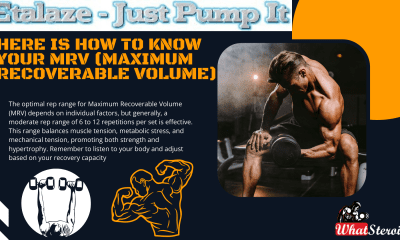
 Bodybuilding10 months ago
Bodybuilding10 months agoHere Is How To know Your MRV (Maximum Recoverable Volume)
-

 Steroids1 year ago
Steroids1 year agoTrenbolone: Why it Remains A Beast In the Market
-

 Steroids8 months ago
Steroids8 months agoSleeping Positions for Effective Muscle Recovery


